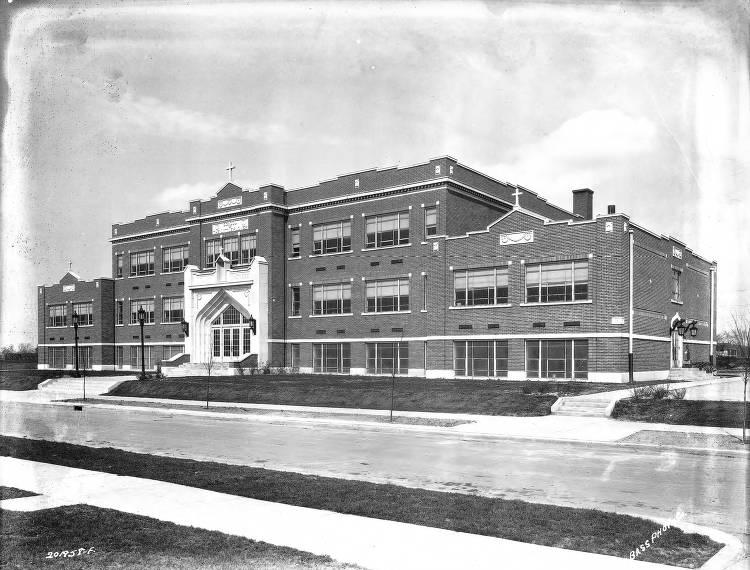Little Flower, on Indianapolis’ east side, is a and neighborhood that developed beginning in the 1920s. It is bounded by 16th Street to the north, 10th Street to the south, Emerson Avenue to the east, and Sherman Drive to the west.

Its namesake Catholic parish, St. Therese Little Flower, was integral to the development of the neighborhood. According to a parish history, the land for the church and school was donated by real estate developers in the hopes that a newly established parish would attract homebuyers. The parish’s first masses were held on July 6, 1925, in a local grocery. The parish population that year was 460 people, made up of 75 households.
While the parish population hints at the size of the neighborhood in the 1920s, it is not until the 1940s that census data was collected with enough detail to accurately measure Little Flower’s population. In the 1940 census, Little Flower had a population of 4,188. Most parishioners were of German and Irish decent. Most of the population were native-born whites, but of the 83 foreign-born residents, 45 percent were from German or Ireland (called Eire in the 1940 Census). In the 1970 Census, there were 366 residents who were foreign-born or who had at least one foreign-born parent. Two-thirds of these had roots in Ireland or Germany.
Since 1970, Little Flower has been increasingly popular among young adults (age 20-34). The share of young adults grew until, in 1990, the neighborhood had a higher share of young adults than three-fourths of metro neighborhoods. Since 2000, the share of young adults has tapered off, slightly.
The neighborhood has also become increasingly college-educated. In 1970, only 3 percent of residents had a bachelor’s degree, a lower rate than 83 percent of neighborhoods. Even in 2000, Little Flower’s college-educated rate was half the regional average. But in the last 20 years, the share of college-educated adults has increased by 223 percent. The neighborhood is now more educated than the median neighborhood in the region.
In the last decade, Little Flower has not seemed to attract 20-34-year-olds as well as other neighborhoods. The share of 20-29 year-olds has fallen since 2010. One-third of Little Flower residents are between 30 and 49 years old, and at the same time, there have been increases among children. These trends are not conclusive but tend to indicate the retention of young families in Little Flower, leading to these increases in both middle-aged adults and children. However, the share of family households has not increased, according to the American Community Survey. Forty-seven percent of households were families in 2010, but only 44 percent in 2016.

Help improve this entry
Contribute information, offer corrections, suggest images.
You can also recommend new entries related to this topic.

